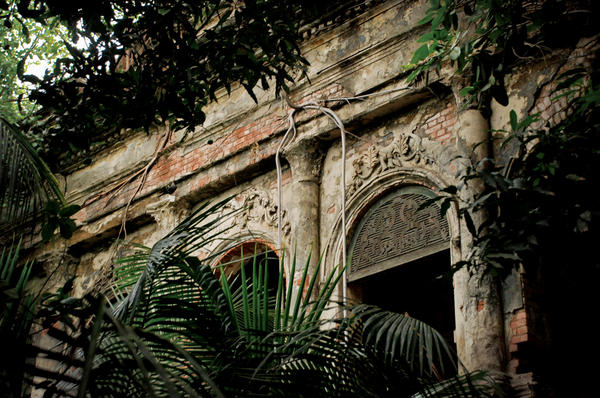Across Old Dhaka, Bangladesh, squatters have taken up residence in the empty shells of Taj Mahal-era Mughal structures. The Urban Study Group is trying to preserve and revitalize some of the 17th-19th century buildings.

- A crumbling Mughal-era mansion in Dhaka’s old city. (Photo: Sebastian Strangio)
DHAKA, Bangladesh—Across Old Dhaka, decaying and sprawling mansions are hulking reminders of the city’s 19th-century commercial boom. Majestic, wrought-iron gates slump inward. Gardens are overgrown. Squatters have taken up residence in some of these empty shells, but mostly these Mughal-era (17th-19th century) structures are now regarded as less important than the land on which they sit.
Taimur Islam, an architect who heads the Urban Study Group, a Dhaka-based organization campaigning to have the old city designated as a protected area, says the pace of development spells an uncertain fate for the city’s architectural heritage. Since 2004, the group has created an inventory of about 3,000 historically significant structures in Old Dhaka, where a handful of buildings are razed daily.
Mr. Taimur says that if the government took a more integrated approach to planning, it could accommodate the preservation of old buildings and also the needs of a ballooning population. It could even help reshape perceptions of Dhaka, one of the world’s fastest-growing megacities. “If it’s possible to restore all those important monuments under certain guidelines and come up with an integrated plan, the rest of the areas could be revitalized too,” he says.
[Published in the Christian Science Monitor, July 26, 2010]


